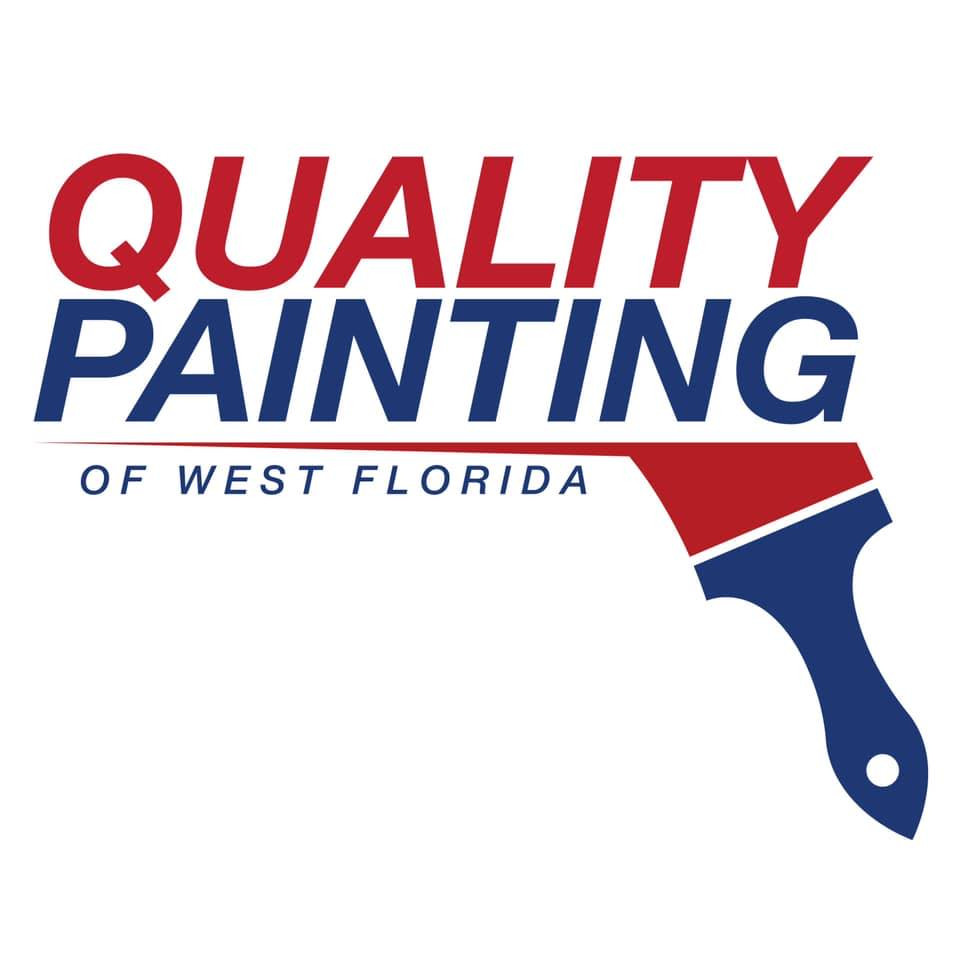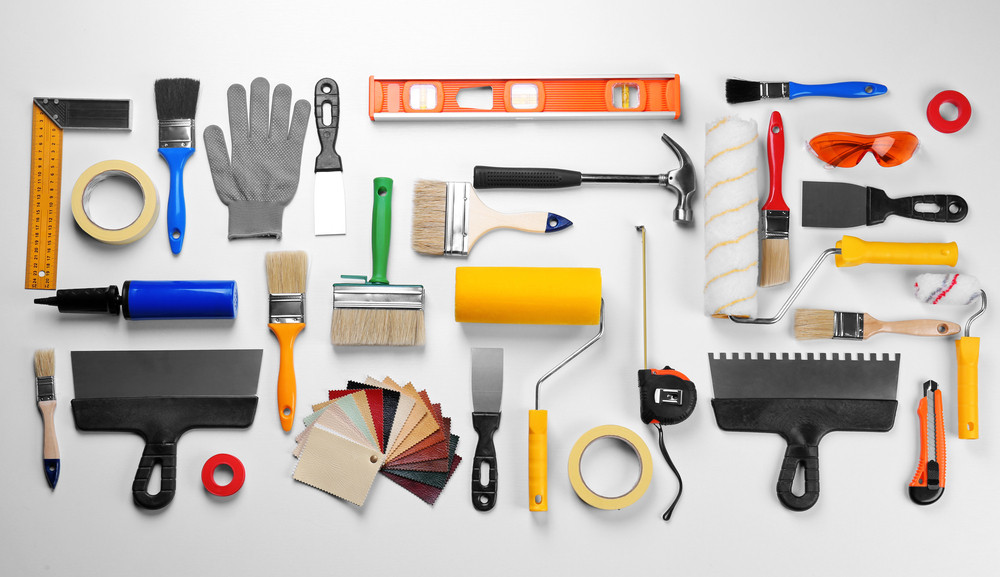Essential Tools and Pro Tips for a Perfect Florida Paint Job
New Port Richey, United States - August 18, 2025 / Quality Painting of West Florida /
Essential Pro Painter Tools and Techniques Revealed
When you watch a professional painter at work, it can seem almost effortless. Each brush stroke glides smoothly, edges are perfectly crisp, and the final result looks like it belongs in a design magazine. The truth is, while skill and experience matter enormously, the tools and techniques a painter uses are just as necessary. Without the proper preparation, equipment, and method, even the most talented painter would struggle to achieve that level of perfection.
If you’re a Florida homeowner who’s thinking about tackling your painting project — or if you simply want to understand better what goes into a professional job — knowing the essential tools and the secrets behind their use can make a big difference. This isn’t just about knowing the names of a few brushes; it’s about understanding how each piece of equipment contributes to a smooth, lasting finish, and how the techniques pros use can help you avoid common pitfalls.
Why the Right Brush Makes All the Difference
One of the first things a professional painter invests in is a good brush. At first glance, all paintbrushes may seem alike, but pros know that bristle quality, stiffness, and shape can completely change the application. An angled sash brush, for example, is a go-to for precise “cutting in” along corners and trim. It allows for clean lines without relying on tape, which not only looks better but also speeds up the process. Flat brushes, on the other hand, excel at covering large, flat areas like doors or cabinet faces with minimal streaking.
In Florida’s warm, humid climate, most interior and exterior paints are water-based latex formulations, which means synthetic bristles are usually the best choice. They hold their shape even when exposed to moisture and maintain a smooth application throughout the project. Oil-based paints, which are used less frequently in modern homes, work better with natural bristle brushes because they hold more product and provide a softer finish.
A professional won’t buy the cheapest brush on the shelf. High-quality brushes don’t shed bristles into your fresh paint, they hold more paint for fewer trips to the can, and they give you more control over the finish. Even if you only plan to paint occasionally, investing in one or two quality brushes can transform your results.
Rollers: Matching the Right Nap to the Surface
Rollers might seem straightforward — you dip them in paint and roll, right? Not quite. The roller cover’s “nap,” or thickness, is chosen carefully based on the surface being painted. A very short nap leaves an ultra-smooth finish, perfect for freshly plastered walls or fine wood paneling. A medium nap is better suited to slightly textured walls, while a thick nap is necessary for rougher surfaces like stucco, which is common on Florida exteriors.
Professionals prefer high-density roller covers because they hold more paint without dripping and keep their texture even after hours of use. In a state like Florida, where stucco and textured finishes are part of the architectural landscape, having the right roller for the job can mean the difference between even coverage and patchy, uneven color.
Preparing the Surface: The Step Pros Never Skip
No matter which high-end quality paint you use or how skilled your technique, painting over a poorly prepared surface is a recipe for disappointment. Preparation is often the most time-consuming part of the process, but it’s also the most important. Professionals will start by filling holes and cracks with spackle or wood filler, ensuring the surface is perfectly smooth. They’ll sand down patched areas so they blend seamlessly with the surrounding wall. In the case of exterior projects, they’ll remove peeling paint and repair any damaged siding before applying a single drop of primer.
In Florida, where humidity and salt air can accelerate paint deterioration, surface prep often includes cleaning with a mild detergent or a specialized cleaner like trisodium phosphate (TSP). This removes oils, dust, and mildew that could prevent the paint from adhering correctly. A wall that looks clean to the naked eye might still have a thin film of grime that could ruin your finish, so pros take the time to ensure every surface is spotless and completely dry before moving on.
Painter’s Tape: Not Just for Beginners
There’s a misconception that professionals don’t use painter’s tape, but in reality, even experienced painters use it strategically. The difference is in how and when they apply it. A pro will choose the right type of tape for the surface — delicate-surface tape for freshly painted walls, multi-surface tape for trim, or heavy-duty exterior tape for outdoor projects. They’ll press the edges firmly to create a perfect seal, preventing paint from bleeding underneath. And they’ll remove it at just the right moment, often before the paint is fully dry, to avoid peeling away any of the fresh finish.
In situations where crisp lines are critical, like painting stripes or creating color blocks, tape becomes an essential tool. The trick is to use it as a precision aid, not a crutch, combining it with steady handwork for the cleanest results.
Ladders, Extension Poles, and Safe Reach
One of the key differences between a DIY job and a professional one is that pros don’t take risks when it comes to reach. Using an unstable chair or overreaching from a short ladder not only jeopardizes safety but also leads to uneven coverage and missed spots. Professionals use high-quality ladders designed for stability and adaptability. A multi-position ladder can handle staircases, vaulted ceilings, and awkward corners with ease.
Extension poles are another secret weapon. By attaching a roller to an extension pole, painters can cover high walls and ceilings without moving a ladder every few feet. In coastal areas, aluminum ladders are especially popular because they resist corrosion from salt in the air, which is a genuine concern for Florida homeowners.
Protecting Surfaces: The Role of Drop Cloths
Nothing says “professional” like a job site that’s clean and protected. Before opening a can of paint, a pro will cover floors, furniture, and landscaping with drop cloths or plastic sheeting. Canvas drop cloths are preferred indoors because they’re reusable, heavy enough to stay in place, and less slippery than plastic. Outside, lightweight plastic sheeting works well to shield plants, windows, and outdoor furniture from stray drips or overspray.
This level of protection isn’t just about preventing damage — it’s also about efficiency. When you don’t have to worry about accidental spills, you can focus entirely on the painting itself.
When Paint Sprayers Come Into Play
Brushes and rollers handle most jobs, but for large-scale projects or heavily textured surfaces, paint sprayers are a game-changer. Airless sprayers can cover an exterior wall or fence in a fraction of the time it would take with a roller, and they can deliver a beautifully even coat. However, sprayers require more preparation, including extensive masking to protect nearby surfaces, and they demand a steady, experienced hand to avoid uneven coverage or overspray.
In Florida, sprayers are often used on stucco exteriors, deck railings, or large commercial spaces where speed and consistency are essential. While homeowners can rent sprayers, they’re best handled by someone with practice, as improper use can create more problems than it solves.
Techniques That Elevate the Final Finish
The tools are essential, but technique is what transforms a coat of paint into a professional-looking result. One of the most critical techniques is maintaining a “wet edge.” This means working quickly enough so that each new stroke of paint blends into the previous one before it dries, preventing visible lines or lap marks. Professionals also know how to load a brush or roller just enough to maximize coverage without causing drips.
When rolling walls, a pro will often start by painting a large “W” shape and then filling it in, which helps distribute paint evenly across the surface. For cutting in along edges, they’ll steady their brush with their hand positioned close to the bristles, moving in smooth, continuous strokes. And they always, without exception, allow the first coat to dry completely before applying the second, ensuring depth of color and durability.
Adapting to Florida’s Climate
Painting in Florida adds a unique layer of challenge. High humidity can slow drying times, affect how paint adheres, and even cause finishes to bubble if moisture is trapped underneath. Professionals adapt by choosing paints and primers specifically formulated for humid or coastal environments. They also pay close attention to weather forecasts, avoiding painting during the hottest parts of the day or when rain is expected within 24 hours.
Ventilation is critical for residential interior painting projects, especially in humid weather. Pros use fans and open windows to help paint cure properly, preventing the sticky or tacky finish that sometimes occurs in damp conditions.
Why Professional Standards Matter
Even with the right tools and a solid understanding of techniques, painting remains a labor-intensive, detail-oriented process. Professionals bring not only their equipment but also years of experience in problem-solving — from matching colors to repairing damaged surfaces before they become bigger issues. They know how to select the right products for each specific job, taking into account surface type, lighting, and environmental conditions.
By understanding the tools and techniques used by professionals, you’ll not only gain a new appreciation for the craft but also be better equipped to tackle small projects yourself — or to hire the right team for larger ones.
Final Thoughts
A flawless paint job isn’t magic. It’s the result of careful preparation, the right tools, and time-tested techniques. From selecting the perfect brush to mastering a smooth roller stroke, each decision along the way contributes to a result that’s not only beautiful but also built to last — especially in Florida’s demanding climate.
If you’re ready to transform your home with a professional-quality paint job, the team at Quality Painting FL brings the right tools, the right expertise, and a dedication to detail that ensures results you’ll love for years to come. Contact us today to schedule your consultation and see the difference a true professional can make.

Contact Information:
Quality Painting of West Florida
11880 CRESTRIDGE LOOP
New Port Richey, FL 34655
United States
Billy Davis
(727) 500-1722
https://qualitypaintingfl.com/
Original Source: https://qualitypaintingfl.com/media-room/


